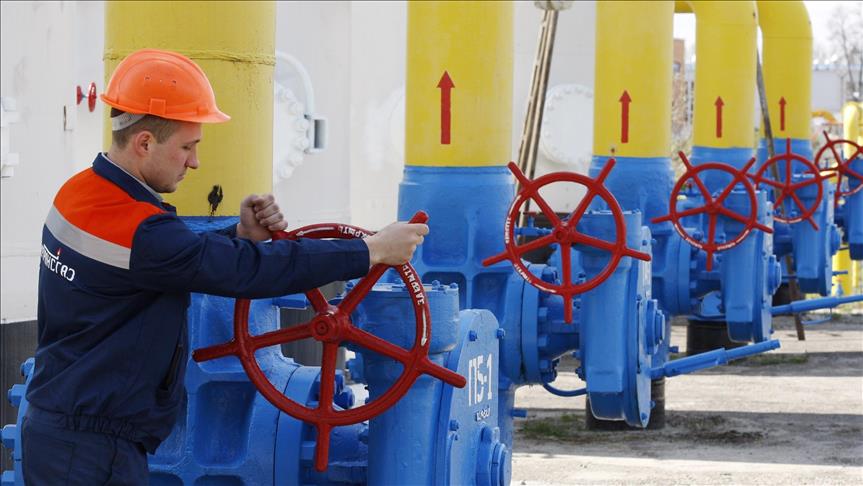The Writer holds an MSc in Eurasian Political Economy & Energy from King’s College London and also an MA in European Studies from Sabancı University.
Amid Kiev’s current aim towards the maximum possible diversification away from Russian supplies, the Ukrainian government’s measures have already paid off when the state-owned Naftogaz announced that it had stopped importing gas from Russia. The gas market reform that Ukraine has undertaken in recent years has seen positive results with the formation of a competitive market, the gradual abolition of pricing regulations as well as the plan to break up the Naftogaz company.
These reforms mainly target the creation of a liberal natural gas market where prices are set according to supply-demand balance, and competition among various upstream investors is encouraged.
The adoption of a new legal and regulatory framework has worked well towards the establishment of a transparent gas market. The move in the liberation to choose suppliers, the adoption of new network codes, the implementation of a market-based balancing mechanism and the requirement for gas storage as a precautionary measure shows the development made in the Ukrainian gas market. Nonetheless, progress made in these fields still faces formidable obstacles due to difficulties in its effective implementation.
Despite delays and parliamentary opposition, laws on energy market regulations and the gas market law were adopted in 2015 and 2016. This legal groundwork laid the foundation for stronger market integration and brought the Ukrainian gas market closer to that of the EU when Ukraine joined the European Network of Transmission System Operators for Gas (ENTSOG) in 2015. Being a member of the ENTSOG is important since the association is responsible for enhancing cooperation between national transmission operators - represented by Naftogaz- and EU states. The association also promotes best practices in the functioning of internal markets and also in cross-border trade.
To end overdependence on Russian gas supplies and to end Gazprom’s monopolistic position as a natural gas importer, the Ukrainian government adopted a natural gas market law to approve the development of reserve flows as a way of diversifying gas supply sources. Following Ukraine’s approval, Poland and Slovakia signed a deal for the construction of the pipeline extending over 99 kilometers to allow reverse flows through interconnectors. The successful application of the project would strengthen the Ukrainian government’s hand and enhance its ability to meet gas demand without being heavily dependent on Russian imports.
Secondly, the unbundling of Naftogaz has been at the top of the agenda for the natural gas market reform. In 2016, the Ukrainian government came up with a plan to restructure the state-owned company. As a dominant supplier, the state-owned Naftogaz held a monopoly on the Ukrainian natural gas market, with responsibility for 75 percent of wholesale gas trading. The plan for the break up of Naftogaz, which is supported by EU institutions, has to comply with the EU’s third energy package as well as with the energy community’s regulations. During the unbundling negotiations, the plan faced major difficulties due to political tensions. Political opposition disrupted the unbundling of the Ukrainian natural gas market and it is currently postponed. However, once the arbitration cases on the supply and transit contracts are resolved soon in Stockholm, the plan could get back on track.
The recent entry of three European companies into the Ukrainian gas market has been a sign of a slow but strong initiative towards achieving market reform. These three companies; , Trailstone, and DufEnergy’s involvement in reverse since 2014 resulted in the signing of an agreement for gas storage at the end of 2016.
Finally, the most difficult reform to realize is the abolishment of pricing regulations. To comply with a well functioning European natural gas market, this regulation must be fulfilled. Pricing regulations, however, would inevitably result in higher prices for consumers. Given the contraction of the Ukrainian economy after the annexation of Crimea and the following political conflict in the East, which brought the country’s living standards down, the implementation of pricing regulations are risky for the government since it will drive prices up.
Overall gas prices in Ukraine are reportedly already been on the rise and against this background, the government decided to use a quarterly adjustment mechanism to apply to regulated prices, while also creating a scheme to allow consumers to pay their bills by installments during the summer months. The implication of the scheme and its success remains to be seen but acceleration in the price revision shows the government’s intention to reform the gas market even if it results in sharply increased bills for consumers.
- Opinions expressed in this piece are the author’s own and do not necessarily reflect Anadolu Agency's editorial policy.


